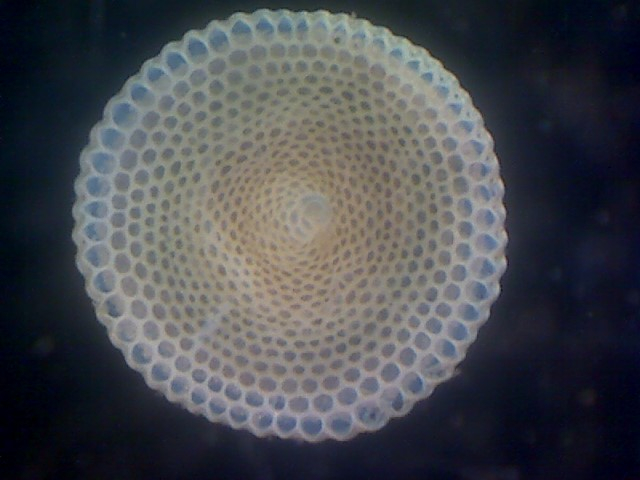PhD defence: Elements in foraminiferal shells as recorders of past climates

PhD Candidate: Esmee Geerken
Defence date: 13-12-2019
Time: 12:45
Institute: Utrecht University
Location: University Hall (Academiegebouw), Domplein 29, Utrecht
Reconstructing climate change with fossil shells
NESSC-researcher Esmee Geerken (NIOZ) studied for her PhD the influence of temperature, salinity and pH of ocean water on the formation and composition of the tiny shells of foraminifera. Foraminifera are single-celled organisms of which some build a protective shell of calcium carbonate. Fossil remains of these foraminifera are an important tool for reconstructing climate change throughout Earth’s history, because the chemical composition of these shells are determined by enviromental conditions. With the new knowledge that Geerken’s research yielded, more accurate climate reconstructions, and thus climate predictions, are possible. She will defend her dissertation at the University of Utrecht on Friday, December 13, 2019.
For her research, Geerken studied the influence of different ocean variables, but also how foraminifera themselves exert influence on the construction of their lime skeleton in a controlled environment. She found, amongst others, that foraminifera are capable to precipitate calcium remarkably fast, so fast that they exert a strong control on the concentration of incorporated elements, such as magnesium. This newly found influence on the chemical composition foraminiferal shells will need to be taken into account when using these shells for climate reconstructions.

Acidification
Study of the formation of foraminifera shells has been a focus at NIOZ for years. Foraminifera shells are an important source for creating climate reconstructions, and, additionally, they play an essential role in the global carbon cycle. Because of rising CO2 concentration, ocean water is steadily acidifying, thereby hampering the production of shells and skeletons by organisms. However, as CO2 is formed as a byproduct during the production of limestone skeletons, there is a feedback loop between atmospheric carbon dioxide and calcification.
Symposium
On Wednesday December 11, Geerken organizes a Foraminieral Symposium where scientists and artists can share their thoughts, images and stories inspired by biominerals. There are only a few available seats left; to book your seat in advance please register at this website.
For NESSC’s educational programma Tipping Point Ahead Geerken told about her research and the influence of the concentration in ocean water on the global climate in the below movie clip, together with her NESSC-colleague Gabrielle Weiss:

